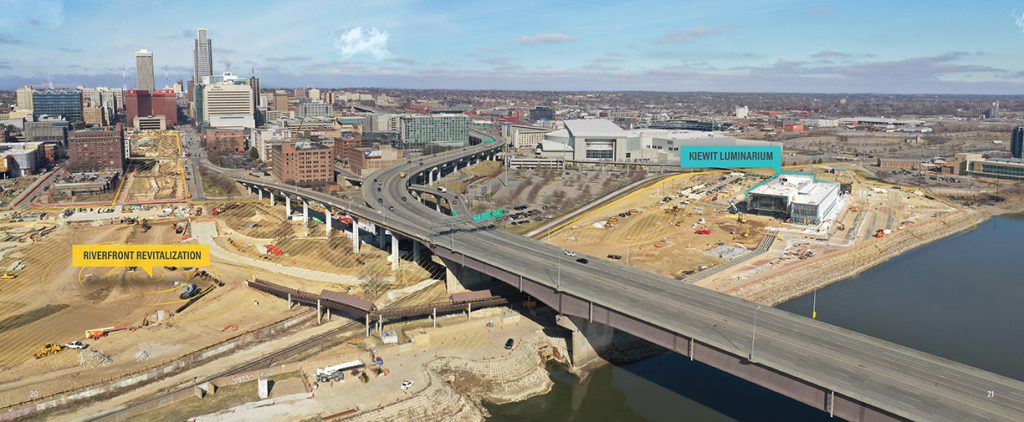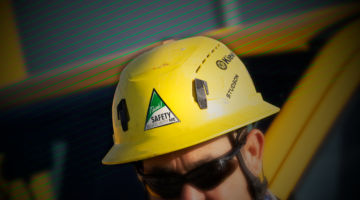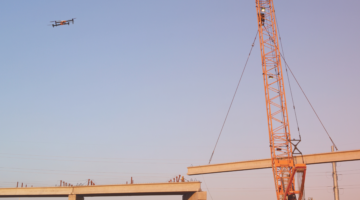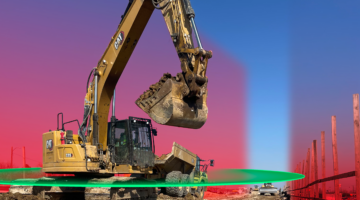For pioneers, the Missouri River represented a new frontier — a place where the future was uncertain but, at the same time, unlimited. That same spirit of discovery and possibility is alive and well in Omaha., where two Kiewit projects are reshaping the future of this community.
Soon, construction will be complete on the Kiewit Luminarium, an innovative, interactive hands-on learning center focused on science, technology, engineering and math (STEM). The experiential destination is expected to attract and inspire visitors of all ages and backgrounds from the local community and the greater region.
Located at Lewis & Clark Landing at the river’s edge, the Kiewit Luminarium is a shining centerpiece of the Omaha Riverfront Revitalization Project.
Kiewit Building Group Inc. is in the process of constructing the finished building to be ready for exhibit installation starting in fall 2022. When it opens to the public in spring 2023, the two-story glass-walled structure — at 82,000 square feet, about the equivalent of 1 ½ football fields — will welcome visitors of all ages.
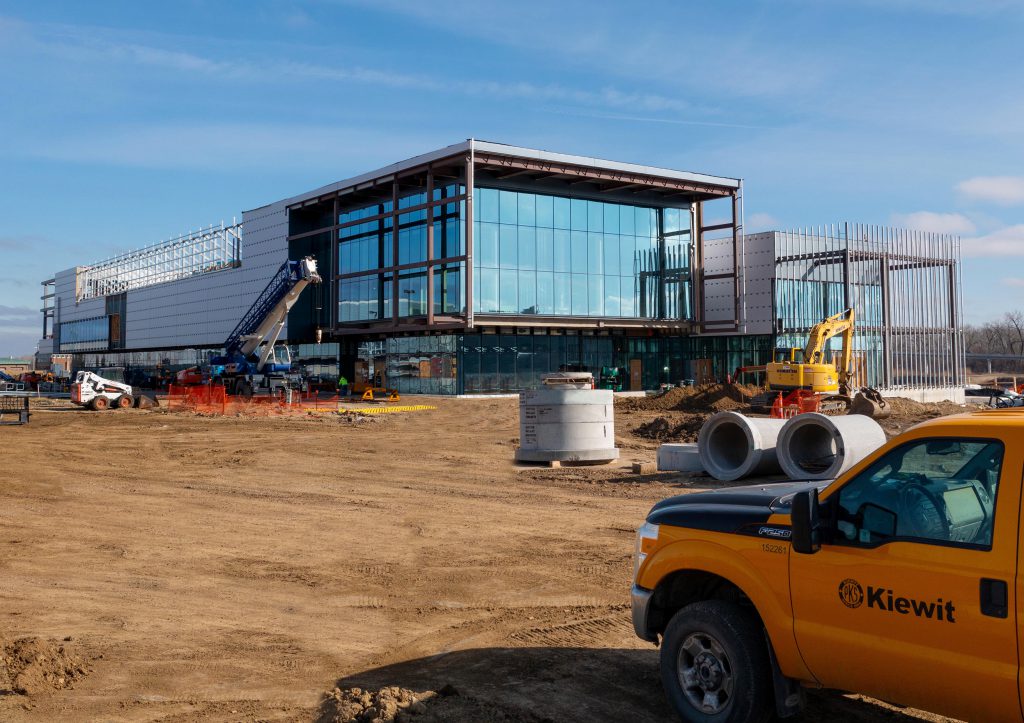
A collaboration with long-term impact
This hasn’t been the usual construction project for Kiewit.
That’s because in addition to serving as construction manager and general contractor, the company also has been a steward in fundraising and establishing a vision for the center.
Those efforts have been led by Chairman Bruce Grewcock and Senior Vice President and Chief Financial Officer Trent Demulling, who also serves as board chair for Omaha Discovery Trust, the project owner.
“The Luminarium fills a gap in the community because there isn’t a science center in Omaha currently,” said Demulling. “It’s going to be a great resource for educators to be able to partner with the Kiewit Luminarium and learn and share best practices to become more innovative.”
Inspiration for the Kiewit Luminarium’s look and feel has come from the Exploratorium, a world-renowned science museum and developer of transformative learning experiences in San Francisco, California. Exploratorium leaders came on as collaborators with Kiewit, designer HDR and project owner Omaha Discovery Trust.
“One of the needs we see in society is to get younger people — particularly those 8 to 18 years old — interested in STEM careers,” said Grewcock.
“This building will be a regional draw, attracting visitors from Sioux City to Des Moines to Kansas City to Lincoln. We are trying to cast a wide net to inspire kids and individuals from all backgrounds and locations on what’s possible in STEM fields.”
Together with community advisors, this team has crafted a place that uniquely reflects Omaha and the surrounding region.
“Anything we can do to stimulate the curiosity within STEM is a benefit to Kiewit and the broader community,” said Demulling.
Getting there has been made easier thanks to Kiewit’s established connections in the construction industry and the consideration the team puts into planning a job, says Rachel Jacobson, president of Heritage Omaha, the philanthropy organization that oversees fundraising for the project.
“The biggest thing — and I think this might be the result of relationships Kiewit has globally — is that we haven’t seen the kind of supply chain issues that have slowed down other projects,” said Jacobson.
She praises the construction team’s communication and ability to roll with the changes. “They’ve been ahead of schedule, which is always wonderful. They’ve been able to keep the budget in check.”
Considering budgets and safety
Before construction on the building could begin in fall 2020, the team had to consider several important elements, including budgets and safety.
Early on, a Guaranteed Maximum Price (GMP) needed to be set based on the yet-to-be-finalized design development documents, said A.J. Klebba, project sponsor.
With the help of design-assist subcontractors, the team was able to establish budgets for design work and guarantee a dollar value for the completed design.
“One of the advantages of bringing on design-assist subcontractors early on in the process is they don’t need a complete set of design documents to provide a complete price,” Klebba said. “I think that’s one of the things that really made this project possible.”
At the job site, the team had special safety considerations.
The project sits on land that was the site of a lead refinery. After the plant was demolished in the late 1990s, the soil was remediated and hazardous debris was encapsulated below a geosynthetic clay liner.
In preparing the foundation for the Kiewit Luminarium, the team took additional precautions to ensure the existing soil would be disturbed as little as possible, said Josh Dudzinski, foundations project manager.
“Our team really took a hard look at making sure that not only our assets — our company, our equipment — were being taken care of properly, but also anyone in the future that is coming to enjoy the Luminarium.”
Staff and craft took part in 40 hours of education to understand which contaminants potentially were still in the soil and steps required to protect themselves.
Placing supports called micropiles was selected as the cleanest technique to minimize interaction with the material below the clay liner that was displaced by the drilling process, Dudzinski said.
The team carefully set the 7-inch reinforcements, ranging in length from 45 feet to 68 feet long, at 207 locations, until they hit bedrock.
It’s a time-consuming process: Each micropile takes about 3 to 4 hours to place. The process was compounded by sub-zero temperatures in February 2021, when compressor issues stopped the drills and work came to a halt.
But the foundations team quickly pivoted, pulling in equipment from all four corners of the country.
“They were able to finish early and set the rest of the project up to continue to beat schedule and improve on our planned durations. That set the tone for the project,” said Project Manager Jon Babovec.
The foundations work was successful in managing the schedule and creating a clean site for generations of future visitors. To ensure proper remediation, the team engaged in extensive testing and tracking of all debris encountered below the geosynthetic clay liners.
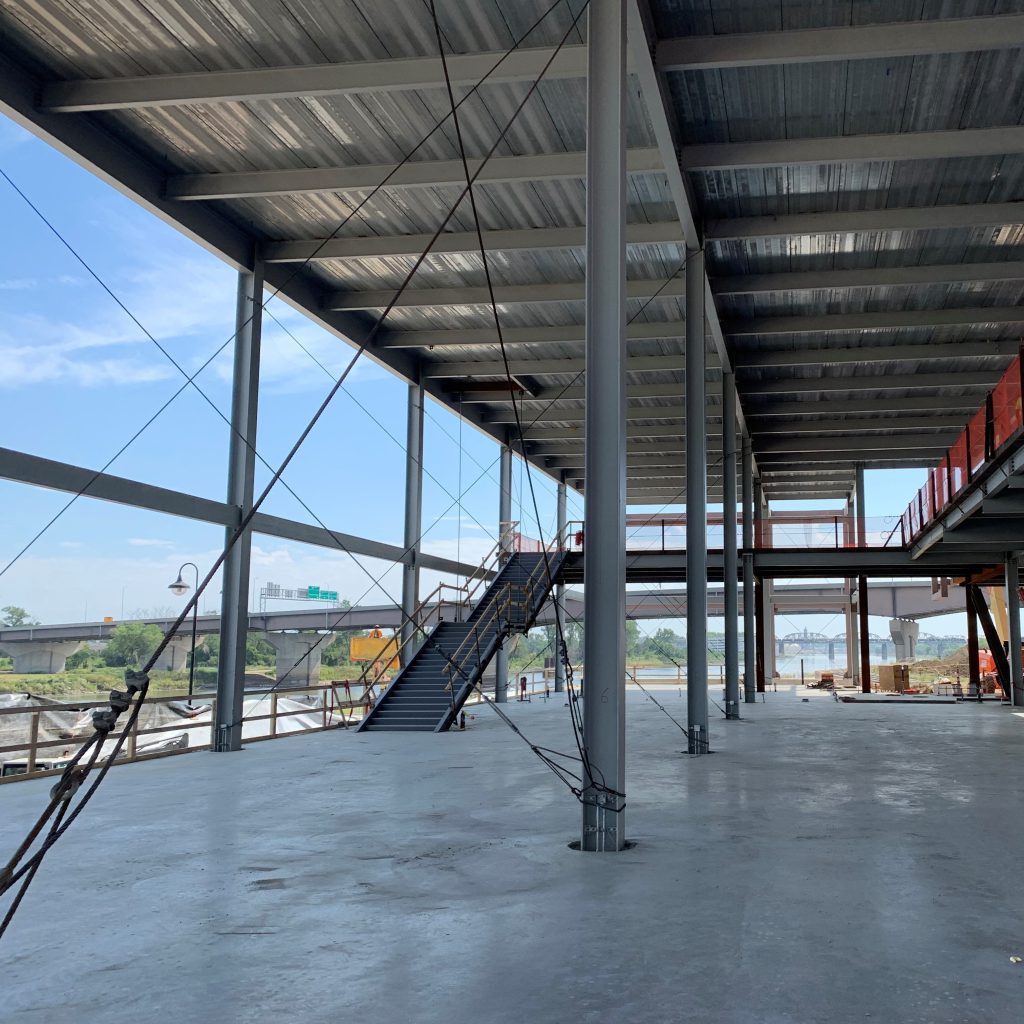
A ‘beautiful container’
As building construction prepares to wrap and inside work continues, the Kiewit Luminarium’s CEO reflects on the work so far.
“Not only has it been seamless in terms of the handoff, but more importantly, there’s been a commitment and kind of a passion that’s been held collectively around what we’re doing here,” said Silva Raker, who joined the new organization in July 2021 after a decade as a senior executive with the Exploratorium.
The building structure is simple, allowing the flexibility to adapt and change to multiple exhibit configurations and possible future uses, and provide a “backdrop” for the building contents.
Raker added, “The building is this beautiful container, this platform that is going to glow on the riverfront of Omaha and signal the things that are going on within, but also the things that are going on in the broader region that are connected to it.”
For more on the Riverfront Revitalization Project, click here.
